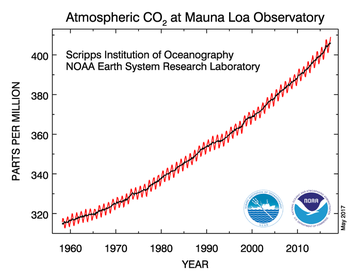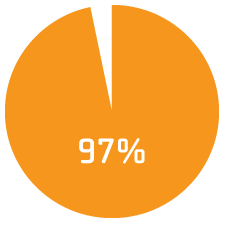(Excuses: In a job interview I was once asked: "Would you rather be on time, or perfect?"
I said I'd be on time AND perfect, because it's a job interview, and that's actually my preferred format. If I were forced to choose, though, I'd rather be on time.
...Which is why I'm so annoyed that Part III has taken until now, and! AND! It's still not done. Oh well. Here it is: neither on time, nor perfect.)
I said I'd be on time AND perfect, because it's a job interview, and that's actually my preferred format. If I were forced to choose, though, I'd rather be on time.
...Which is why I'm so annoyed that Part III has taken until now, and! AND! It's still not done. Oh well. Here it is: neither on time, nor perfect.)
Putting It All Together (Parts I, II, & III) for Climate Science
I began to write this piece as soon as I saw a statement given by a Trump campaign advisor[1] about putting a stop to politicized science and “politically correct environmental monitoring,” particularly as it pertains to climate science.
I want to stop the process of facts becoming partisan, at least in this small corner of the world, and to decouple science from opinion, politics, and media[2].
Since Trump has taken office, the issues page on Whitehouse.gov has changed significantly from its previous iteration and as of January 23rd, 2017, there is no official White House policy on climate change. The new administration’s cabinet has varying views on climate change, the danger it poses, and whether or not it’s caused by man.
So let's start from the beginning.

The earth is getting hotter, and that’s not good news.
The term climate change describes variations, natural or unnatural, in the earth’s temperature and weather. Thanks to fluctuations in the amount of gases that trap heat in our atmosphere (mainly CO2, AKA carbon dioxide), the earth’s climate has always had times when it was warmer or colder, but according to records that stretch back 800,000 years, we’ve reached an all-time high amount of that heat-trapping CO2.
We need carbon dioxide in our atmosphere. CO2 is naturally formed by volcanic eruptions and breathing/metabolism in living creatures, among other things, and plants need it to photosynthesize. Tons of ocean animals need carbon to form shells and living structures (and some shelled organisms actually build even tougher shells with more CO2 present). Without CO2, earth would be a lifeless ball of ice.
The term climate change describes variations, natural or unnatural, in the earth’s temperature and weather. Thanks to fluctuations in the amount of gases that trap heat in our atmosphere (mainly CO2, AKA carbon dioxide), the earth’s climate has always had times when it was warmer or colder, but according to records that stretch back 800,000 years, we’ve reached an all-time high amount of that heat-trapping CO2.
We need carbon dioxide in our atmosphere. CO2 is naturally formed by volcanic eruptions and breathing/metabolism in living creatures, among other things, and plants need it to photosynthesize. Tons of ocean animals need carbon to form shells and living structures (and some shelled organisms actually build even tougher shells with more CO2 present). Without CO2, earth would be a lifeless ball of ice.

CO2 is also created when humans burn fossil fuels like oil and gasoline, and a lot of our modern world relies on fossil fuels to function. While some people say there’s no way human-produced carbon dioxide emissions approach the levels of naturally produced CO2, others say that man-made CO2 emissions are many, many times greater than natural, and our contributions are what’s causing global warming.
| It’s been well documented that 97 percent of the world’s scientists agree that climate change is real and caused by human activities; it’s also been well documented that consensus may have been overstated, and the actual amount could be lower, though still around 80 percent. More recently, a 2016 paper confirms the 97% figure among climate scientists, and several surveys conducted of scientists found that the more experience a scientist has with climate, the more likely they are to cite climate change as driven by human activities. |
63 percent of the American public thinks that global warming is happening, and about half believe it’s caused by human activities. 34 percent think there’s “a lot of disagreement” in the scientific community over whether climate change is occurring. [3]
I hear this a lot: “If scientists can’t agree that humans cause climate change, why should I agree?”
It’s a very frustrating (but unsurprising and understandable) question. (Refer to Part II: FACT DRIFT if you want an example of how people might conclude that there’s a lot of disagreement.)
Some people don’t believe the scientific consensus because they distrust scientists’ ability to be impartial[4], and because there are sources that dispute the human origins of climate change. If a person only pays attention to sources that agree with their personal opinion, they may fall victim to confirmation bias, or believing something is true because they want it to be true.
To be continued.
[1] Bob Walker is a Republican from Pennsylvania who served in Congress from 1977-1997 and was the Chairman for the Committee on Science from 1995-1996.
[2] Wherever possible, I’ve used primary source materials and have included information presented by both left and right-leaning media sources. I encourage everyone reading this to check my sources.
[3] Points 1 and 2 come from a study conducted by Yale on US national opinions about climate change: environment.yale.edu/poe/v2014/
[4] A breakdown of who’s reporting on validity of climate change: Science Progress, part of the Center for American Progress, which some would argue has a liberal bent; Skeptical Science is run by the author of one of the papers that arrived at a figure of 97% consensus regarding the anthropogenic origins of climate change; NASA’s Global Climate Change program, which got its start under a liberal government and stands to lose funding; NOAA, another government agency that stands to lose funding for programs; and Science Daily, which collects news about science and research, but does not publish its own material; the National Review Online, a publication of the National Review Institute, is the self-proclaimed “most widely read and influential magazine and website for conservative news, commentary, and opinion.”



 RSS Feed
RSS Feed
